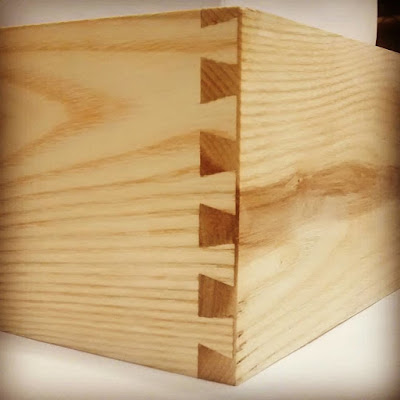I guess it depends on how you’re defining “real wood workers.” In general, there’s probably good evidence that most carpenters (whom I would consider “real wood workers”) use nails. Nailing wood together is a quick and reliable way to join pieces of wood together and commonly used. While possible, I can’t imagine building a backyard deck without nails.
However, your father may have been speaking more of wood craftsmen/craftswomen, people who design their own pieces. Such a person would have the skill of joining wood with joints, cuts in the wood that enable wood pieces to fit together and hold fast. This kind of work requires a lot of precise cuts and takes time to do well. There’s a wide breadth of joint types, including the “mortise and tenon joint” and “finger joints”/”comb joints” pictured below:
Mortise and Tenon Joint
Comb Joints
Biscuit Joint
Bridle Joint
Dovetail Wood Joint
Why would a wood worker use joints instead of nails or glue? Here are a few reasons:
- A nail-free piece shows off a woodworker’s skill and talent
- Nails can be seen in the end result of a piece and can distract from the beauty of the wood; joints can be internal and invisible or visible but attractive
- A piece using joints can be assembled without tools and extra pieces.
- Similarly, such a piece can be dismantled without destroying the individual pieces.





